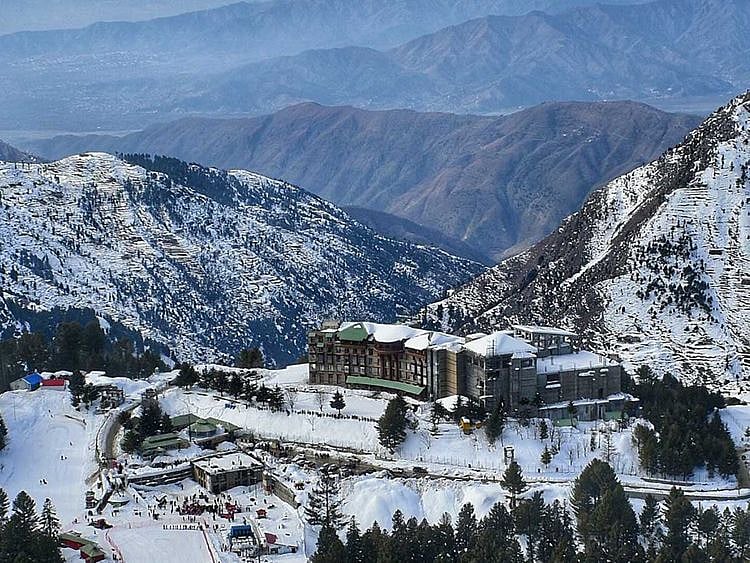Explained: Why Pakistan faces one of its coldest winters this year
La Nina-driven cold and post-flood damage threatens crops, livelihood in Pakistan

Dubai: Pakistan is bracing for one of its coldest winters in decades, with the La Nina climate pattern expected to bring unusually low temperatures across the country.
According to a report compiled by the Intersector Coordination Group (ISCG) with UN-OCHA, this could intensify challenges for households already affected by devastating monsoon floods, particularly in Khyber Pakhtunkhwa (KP) and Gilgit Baltistan (GB) in the north of Pakistan.
Extreme temperature
La Nina occurs when sea surface temperatures in the Pacific Ocean drop below normal, triggering global weather shifts that can cause extreme temperature fluctuations and abnormal rainfall patterns.
As Pakistan heads into winter, the combined effects of La Niña and lingering flood impacts threaten not only colder temperatures but also food security, public health, and economic recovery, particularly in the country’s most vulnerable northern and mountainous regions.
Rainfall outlook
The ISCG report forecasts that northern Pakistan including Khyber Pkhtunkhwa, northern Punjab, Pakistan administered Kashmir (AJK), and Gilgit Baltistan may experience below-normal rainfall, while southern regions like Sindh, Balochistan, and southern Punjab are expected to receive near-normal precipitation. Marginally negative phases of both the El Niño Southern Oscillation and the Indian Ocean Dipole are expected to influence these rainfall patterns.
Potential impacts
The report warns of multiple consequences from this unusual combination of cold weather and post-flood conditions:
Disruption of Kharif crop harvesting due to isolated storms.
Higher risk of dengue and other vector-borne diseases in areas with stagnant water.
Increased chances of glacial lake outburst floods in mountainous regions.
Reduced river inflows affecting irrigation and farming.
Elevated smog and air pollution in plains.
Adverse effects on livestock health and fodder availability due to above-normal temperatures.
Post-flood challenges
The humanitarian situation in Pakistan remains critical. The report highlights “a diminishing response capacity both by government and humanitarian partners.” Initial emergency stocks and funds have been largely exhausted, leaving many flood-affected families without adequate support for basic services during the transition from emergency relief to early recovery.
Food security
A geo-spatial assessment by the Food and Agriculture Organization (FAO) found that roughly 1.2 million hectares of farmland in Punjab, the nation’s agricultural hub, were submerged. Key crops such as rice, cotton, and sugarcane were damaged, and the flooding coincided with the crucial period for planting Rabi crops. Livestock, fodder, machinery, and agricultural tools were destroyed, severely threatening livelihoods and the ability to resume income-generating activities.
Health concerns
According to the report, more than 229,760 homes were damaged or destroyed, forcing families to sleep outdoors with minimal protection. Stagnant water poses health risks, including outbreaks of cholera, diarrhoea, typhoid, malaria, and dengue. Schools and health facilities remain disrupted, while food and fodder shortages are worsening food insecurity.
What is La Nina?
La Nina conditions have returned to the central equatorial Pacific Ocean, marking the fifth occurrence in six years, meteorologists reported on Thursday, October 9. Experts say this La Niña is expected to be mild and short-lived.
According to the US National Oceanic and Atmospheric Administration (NOAA), “La Nina conditions emerged in September 2025… and are likely to persist through December 2025 to February 2026.”
La Niña is a phase of the El Nino Southern Oscillation (ENSO), a climate pattern defined by variations in sea surface temperatures across the central and eastern tropical Pacific Ocean, along with corresponding atmospheric changes. ENSO affects global weather by influencing atmospheric circulation patterns worldwide.
ENSO has three phases: El Nino (warm), La Nina (cool), and neutral, which occur irregularly every two to seven years.
Neutral phase: The eastern Pacific (near South America) is cooler than the western Pacific (near Indonesia and the Philippines), as prevailing winds push warm surface waters westward, allowing cooler waters to rise along the coast.
El Nino phase: Trade winds weaken, reducing westward water movement, causing the eastern Pacific to warm.
La Nina phase: Trade winds strengthen, pushing more warm water westward, leading to cooler-than-usual waters in the eastern Pacific.
In India, El Nino is linked to reduced rainfall and higher temperatures, while La Nina typically brings increased rainfall and cooler temperatures.
Sign up for the Daily Briefing
Get the latest news and updates straight to your inbox
Network Links
GN StoreDownload our app
© Al Nisr Publishing LLC 2025. All rights reserved.